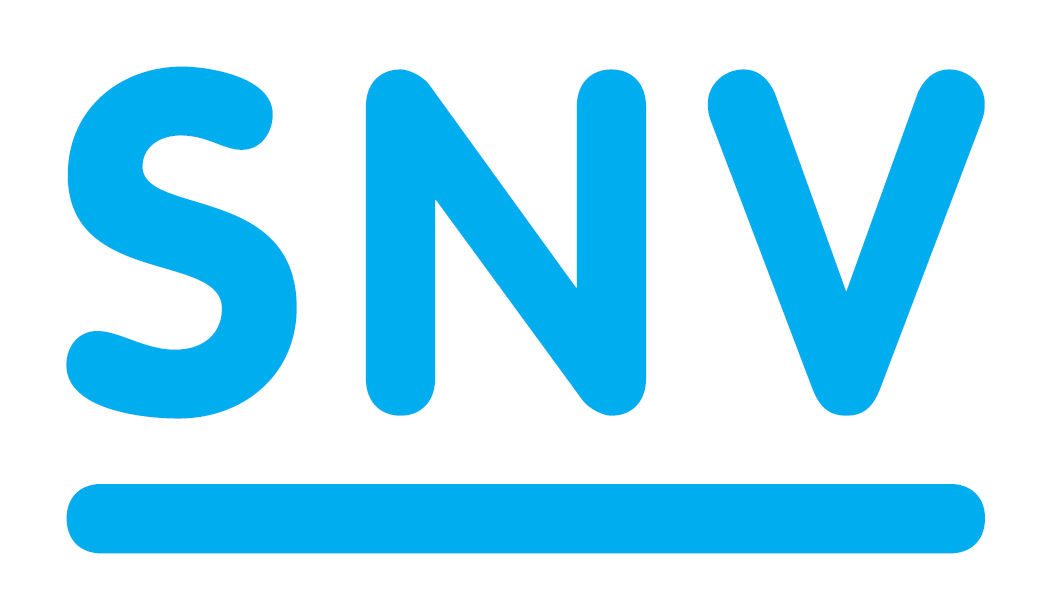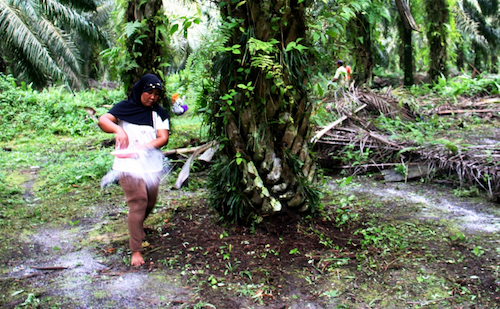Sustainable Oil Palm Farming / Applying nitrogen (N)
Download: Module 4: Fertiliser Application
Contents
Goal
- Provide oil palms with sufficient nitrogen to produce optimum yields;
- Limit the loss of fertilisers to the environment.
Standard
Nitrogen fertiliser is applied according to the 4R principle: right type, right amount, right place, right time.
Timing
- After it rains, when the soil is still moist;
- Not when the soil is water-logged;
- Not in the dry season when no rain is expected;
- Note: For urea, apply in the morning of a day when rain is expected soon (in the afternoon or on the next day).
Frequency
At least 2 doses per year (once every 6 months) and optimally 3 doses (once every 4 months) because less nutrients are lost.
Labour time required
2—4 hours per hectare.
Equipment and materials
- Bucket, bag or wheelbarrow
- Kitchen scales
- Black marker pen
- Bowl (1.5—2 L)
- Fertiliser
Dosage
See: Table 4; Table 5; Table 6; Table 7.
Who
Farmers and their families or hired labourers.
How
Apply nitrogen fertiliser by following these steps:
| Step 1. | Make sure the plantation is well maintained, noxious weeds have been removed and ground cover has been slashed to 50 cm height. |
| Step 2. | In a bowl or cup weigh the amount of fertiliser to be applied with kitchen scales. |
| Step 3. | Mark the bowl/cup at the right amount using a black marker pen. |
| Step 4. | Break up any clumps of fertiliser into small pieces before application. |
| Step 5. | Apply the N fertiliser in the following way:
If palms are located on the edge of a river, road or ditch, avoid applying fertilisers on the side of the palm closest to the edge. |
Note: A good (and cheaper) way to provide part of the N is by sowing legume cover crops (see Module 3: Plantation Maintenance).
Data recording
Every fertiliser application should be recorded in a logbook as shown in the example below.
| Date | Time | Location | Activity | Input type | Input amount | Input costs | Labour input | Labour costs | |
| People | Hours | ||||||||
| 16/01/13 | Field 3 | Fertiliser: N | Urea | 150 kg | 360000 | 1 | 4 | 40000 | |
References
- ↑ K.J. Goh, R. Härdter, T. Fairhurst, Fertilizing for maximum return, in: T. Fairhurst, R. Härdter (Eds.) The Oil Palm - Management for Large and Sustainable Yields, Potash & Phosphate Institute of Canada, Potash & Phosphate Institute, International Potash Institute, Singapore, 2003, pp. 279—306.
Acknowledgements
The material from Applying nitrogen (N) is sourced from Smallholder Oil Palm Handbook and put together by Lotte Suzanne Woittiez (Wageningen Universit) and Haryono Sadikin, Sri Turhina, Hidayat Dani, Tri Purba Dukan, and Hans Smit (SNV) in August 2016. See Module 4: Fertiliser Application for more information.




